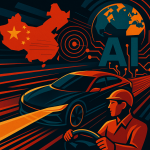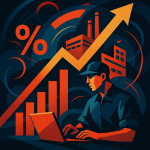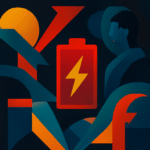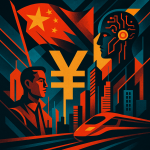Key Points
- The Chinese auto industry is successfully combatting “involution” (neijuan 内卷), a hyper-competitive internal struggle involving price wars, to focus on sustainable, high-quality growth.
- This shift has led to record-breaking performance in H1 2025, with total production & sales exceeding 15 million units (over 10% YoY growth), and NEV sales hitting 6.937 million units (40.3% YoY increase).
- New Energy Vehicles (NEVs) now account for 44.3% of all new vehicle sales, peaking at 48.6% in June alone, and NEV exports skyrocketed by 75.2% YoY to 1.06 million units.
- Companies like Seres (Sailisi 赛力斯) and its collaboration with Huawei on AITO are seeing massive profit increases (Seres’s H1 net profit up to 97% YoY), and BYD (Biyadi 比亚迪) sold 2.146 million vehicles in H1 2025.
- The positive impact extends to the supply chain, with upstream tech companies like HGTECH (Huaguang Keji 华工科技) and battery giants like CATL (Ningde Shidai 宁德时代) (43.05% market share) experiencing significant growth.

The Chinese auto industry is hitting the brakes on its infamous, profit-crushing price wars, a phenomenon known locally as “involution.”
And the results are already staggering.
Led by the China Association of Automobile Manufacturers (CAAM), the industry is shifting from a cutthroat race to the bottom to a focus on sustainable, high-quality growth.
This isn’t just talk. The latest data reveals a market on fire, with sales, exports, and company profits hitting record highs.
Let’s break down what’s happening and who’s winning.
What is ‘Involution’ and Why is China’s Auto Industry Ditching It?
First, what exactly is “involution” (neijuan 内卷)?
Think of it as a hyper-competitive internal struggle where companies get locked in a vicious cycle of one-upping each other—primarily through aggressive price cuts—with diminishing returns for everyone involved.
It’s a race to the bottom that erodes profit margins and creates an unstable market.
CAAM recognized this was a dead-end street and issued a call to action: Uphold fair competition, promote healthy development, and stop dumping products at below-cost prices.
The association is also getting ahead of the problem globally.
Fu Bingfeng (Fu Bingfeng 付炳锋), Executive Vice President of CAAM, emphasized that the association is working to strictly prevent “involution spillover.”
In other words, they want to ensure Chinese auto companies don’t export these destructive price wars as they expand internationally, instead focusing on respecting local laws and cultures for orderly growth.
“Moving forward, we will further refine long-term working mechanisms, gather positive industry energy, and jointly foster a healthy and harmonious industrial development ecosystem,” said Fu.
The Industry is Listening: Automakers Take Action
This isn’t just a government mandate; the biggest players are actively on board.
- BYD (Biyadi 比亚迪) recently canceled its promotional “one-price” policy for 22 models.
- Geely Automobile (Jili Qiche 吉利汽车), BAIC BluePark (Beiqi Lan’gu 北汽蓝谷), and Changan Automobile (Changan Qiche 长安汽车) have also rolled back recent price reductions.
- In a major move to stabilize the supply chain, BYD also committed to unifying supplier payment terms to within 60 days, ensuring its partners get paid faster.
Li Yunfei (Li Yunfei 李云飞), GM of BYD’s Brand and Public Relations, stated the company will fight “involution” with technological innovation, not just marketing gimmicks.
According to Cui Dongshu (Cui Dongshu 崔东shu 崔东), Secretary-General of the China Passenger Car Association (CPCA), the results are clear: the scale of price reductions plummeted from April to June 2025, leading to a healthier, more sustainable industry.

Find Top Talent on China's Leading Networks
- Post Across China's Job Sites from $299 / role
- Qualified Applicant Bundles
- One Central Candidate Hub
Your First Job Post Use Checkout Code 'Fresh20'

The Results Are In: China’s Auto Market Shatters Records in H1 2025
With the industry moving away from price wars, the underlying demand is shining through. The numbers for the first half of 2025 are massive.
- Total Production & Sales: Both exceeded 15 million units, a year-over-year (YoY) growth rate of over 10%.
- New Energy Vehicle (NEV) Sales: Hit a stunning 6.937 million units, up 40.3% YoY.
- NEV Penetration Rate: NEVs now account for 44.3% of all new vehicle sales. This figure climbed to an astounding 48.6% in the month of June alone.
- Total Vehicle Exports: Reached 3.083 million units, a 10.4% YoY increase.
- NEV Exports: Skyrocketed to 1.06 million units, a jaw-dropping 75.2% YoY increase.
The six largest automakers—BYD, SAIC Motor (Shangqi Jituan 上汽集团), Geely, Changan, Chery, and Great Wall Motor (Changcheng Qiche 长城汽车)—sold a combined 8.79 million vehicles in the first half of the year.
BYD emerged as the top-selling brand across the entire industry.

ExpatInvest China
Grow Your RMB in China:
- Invest Your RMB Locally
- Buy & Sell Online in CN¥
- No Lock-In Periods
- English Service & Data
- Start with Only ¥1,000

From Policy to Profits: The Companies Winning Big
A healthier market means healthier balance sheets. Several publicly listed companies are already reporting huge gains.
Seres + Huawei’s AITO: A Masterclass in Collaboration
- Expected Net Profit Range: ¥2.7 billion – ¥3.2 billion RMB
- Expected Net Profit (USD): $370 million – $440 million USD
- Year-over-Year (YoY) Increase: Up to 97%
- AITO Vehicle Deliveries (June): Over 44,000 units (New Record)
- Huawei Intelligent Driving Systems in Vehicles: Over 700,000
Seres (Sailisi 赛力斯) is a prime example of this new-found success.
The company announced an expected net profit for H1 2025 between ¥2.7 billion and ¥3.2 billion RMB ($370 million to $440 million USD).
That’s a YoY increase of up to 97%.
The secret sauce? Its deep collaboration with Huawei on the AITO (Wenjie 问界) brand of premium intelligent EVs.
AITO delivered over 44,000 vehicles in June, a new record, and its models are now outselling giants like Mercedes-Benz, BMW, and Audi (BBA) in certain segments.
It’s a powerful combo: Seres’ manufacturing prowess paired with Huawei’s game-changing intelligent driving system, which is now in over 700,000 vehicles.
The Supply Chain Revolution: CATL’s ‘Factory-in-Factory’ Play
The innovation isn’t just in the cars, but also in how they’re made.
Battery behemoth CATL (Ningde Shidai 宁德时代) and AITO just launched a groundbreaking “factory-in-factory” model.
CATL has built a dedicated battery pack production line *directly inside* the Seres Super Factory.
This move achieves highly efficient, localized production and supply of batteries for AITO vehicles, creating an incredibly tight integration between the two partners.
Zeng Yuqun (Zeng Yuqun 曾毓群), Chairman of CATL, called it “a new starting point” for their cooperation.
BYD’s Unstoppable Growth Continues
Unsurprisingly, BYD continues its reign.
The company sold a massive 2.146 million vehicles in the first half of 2025, a 33% increase YoY.
This growth is powered by a deep lineup of hit models, including:
- The Qin from the Dynasty series: 274,300 units sold in H1.
- The Seagull from the Ocean series: 284,400 units sold in H1.
The Ripple Effect: Upstream Tech is Booming
The tide is lifting all boats, especially those in the upstream supply chain.
HGTECH (Huaguang Keji 华工科技), a sensing and components company, expects its H1 net profit to grow by up to 52%, reaching as high as ¥950 million RMB ($130 million USD).
Why? The explosion of NEVs and intelligent driving systems is creating insane demand for their components.
PBI Securities noted that L2++ intelligent assisted driving is now breaking into the sub-¥100,000 RMB ($13,700 USD) vehicle segment, driving rapid growth for suppliers of SoCs, lidar, and sensors.
And in the world of batteries, the growth is immense.
Installed power battery capacity in China hit 299.6 GWh in H1, a 47.3% jump YoY.
Lithium iron phosphate (LFP) batteries are completely dominating, making up 81.4% of all installations.
CATL continues to lead the pack with a 43.05% market share, while other players like CALB (Zhongchuang Xinhang 中创新航) and Gotion High-Tech (Guoxuan Gaoke 国轩高科) are also seeing strong growth.
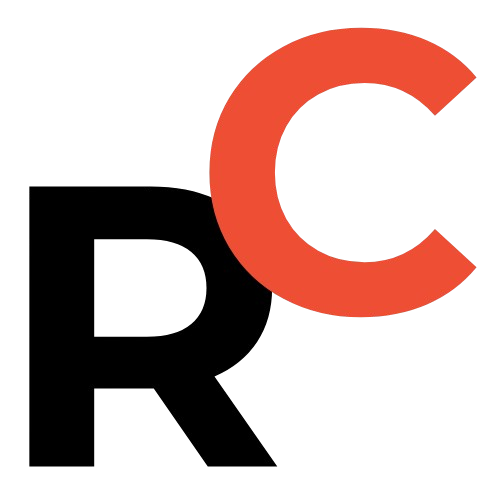
Resume Captain
Your AI Career Toolkit:
- AI Resume Optimization
- Custom Cover Letters
- LinkedIn Profile Boost
- Interview Question Prep
- Salary Negotiation Agent

What’s Next for China’s Booming EV Market?
Looking ahead, the momentum is expected to continue.
Ongoing government policies encouraging vehicle trade-ins and NEV adoption, combined with the impending phase-out of some NEV purchase tax exemptions, will likely spur another wave of consumer demand in the second half of the year.
By moving past the era of self-defeating price wars, the industry is setting itself up for more robust, innovation-driven, and profitable growth.
For investors, founders, and tech enthusiasts, the message is clear: the strategic shift away from “involution” is unlocking immense value across the entire China auto industry supply chain.


